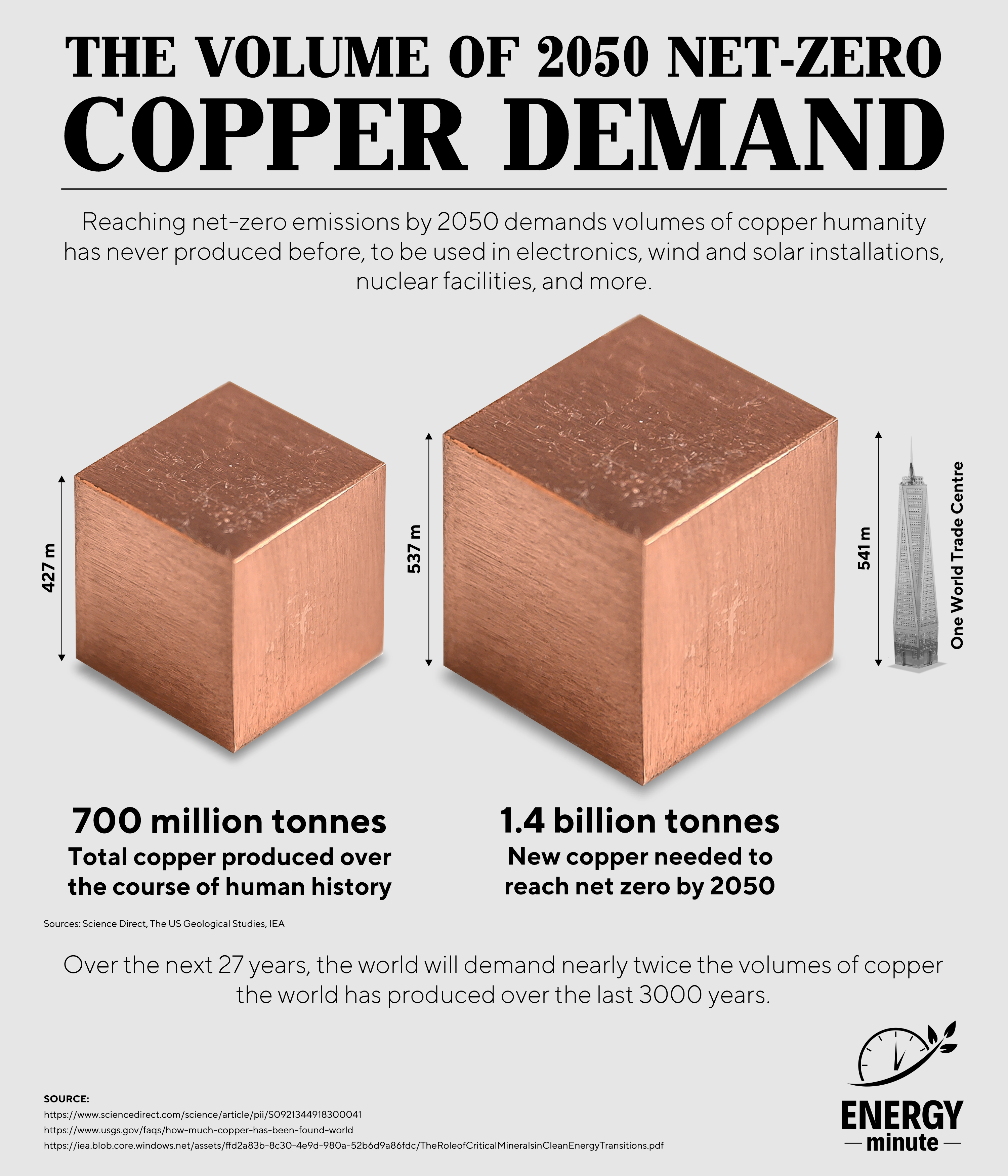Volume of 2050 Net-zero Copper Demand

Reaching net-zero emissions by 2050 demands volumes of copper humanity has never produced before, to be used in electronics, wind and solar installations, nuclear facilities, and more.
Over the next 27 years, the world will demand nearly twice the volumes of copper the world has produced over the previous 3000 years.
The history of copper
Copper is one of the oldest metals known to humans. It was first used as a substitute for stone tools around 8000 BCE by Neolithic people. Copper was also used to make ornaments and jewelry. Copper alloys, such as bronze (copper and tin), were discovered around 3500 BCE and ushered in a new era of human civilization.
The name copper comes from the Latin word cuprum, which means “metal of Cyprus”, where Romans mined it extensively. Copper was also associated with the goddesses Venus and Aphrodite in ancient mythology and alchemy.
Copper is a metal that has many uses today
- Electrical: Copper is the most effective conductor of electricity after silver. It is used for wiring, motors, generators, transformers, and other electrical equipment.
- Construction: Copper tubing is the standard material for plumbing and heating systems in most developed countries. It is also used for roofing, cladding, flashing, and gutters.
- Transport: Copper is essential for the electrical and thermal properties of planes, trains, automobiles, and boats. It is also used for brakes, bearings, radiators, and connectors.
- Other: Copper has many other applications such as jewellery, medical devices, coins, cookware, musical instruments, and art.
Copper’s role in the energy transition
Copper is a key metal for the energy transition, as it is used in various clean energy technologies such as solar panels, wind turbines, electric vehicles, batteries, and hydrogen production. Copper demand will rise 50% by 2040 as clean energy takes hold, growing by about 4% per year.
However, there are challenges and uncertainties for the future of copper supply and demand. There could be a looming mismatch between available copper supply and future copper demand that could present obstacles to achieving net zero emissions by 2050 goals. A study by S&P Global estimates that copper demand will nearly double to 50 million metric tons by 2035 and reach more than 53 million metric tons by 2050. Current copper production capacity is only projected to increase by about 20% over the next decade – this could lead to a significant supply gap that would require new investments and discoveries of copper resources.
Copper also faces competition from other metals such as aluminium, which is cheaper and more abundant but has a higher carbon footprint for primary production.
Copper prices are also volatile and influenced by various factors such as geopolitics, trade policies, environmental regulations, and consumer preferences. Therefore, the future of copper in the energy transition will depend on how these challenges and opportunities are addressed by different stakeholders such as producers, consumers, governments, investors, and innovators.
Sources:
https://www.sciencedirect.com/science/article/pii/S0921344918300041
https://www.usgs.gov/faqs/how-much-copper-has-been-found-world




